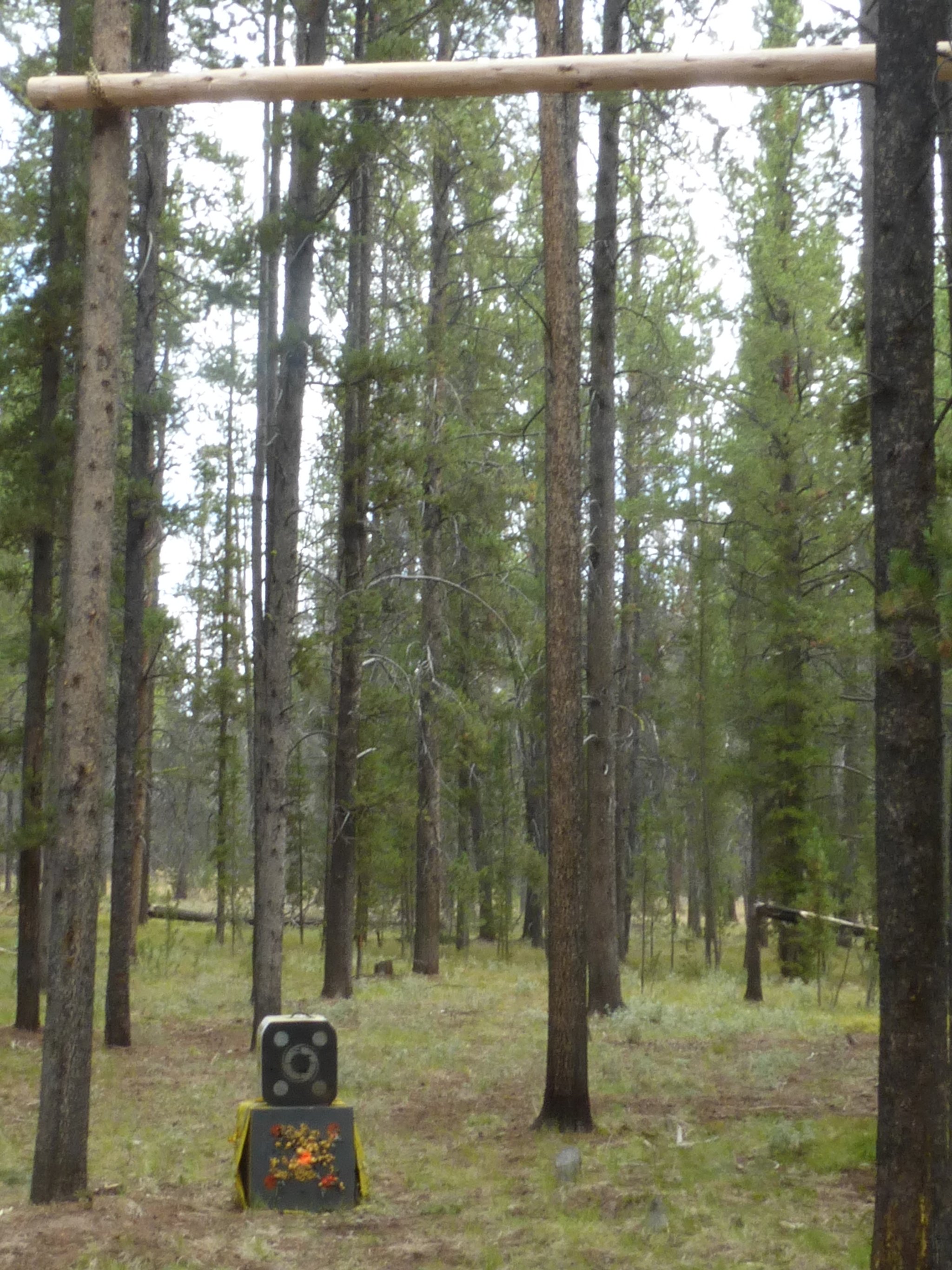Infrastructure in the Woods
Imagine you’re a grizzly bear in the Selkirk Mountains of northern Idaho. You’ve decided it’s time to move on to find some new, fattening food sources. As you amble around, who knows what you’ll find?
Bear awareness sign
We want to eliminate the risk of “who knows” for bears. In the Idaho Panhandle National Forest (IPNF), garbage, coolers, human foods, and camping supplies can be found at recreation sites across the forest, and these are attractants for grizzly and black bears. These and other odorous items need to be stored properly to keep bears out of conflict so they can keep moving and, in the case of grizzlies, recolonizing Idaho wilderness to the south. People and Carnivores has partnered with forest managers to conduct an inventory of bear-related infrastructure at recreation sites across the IPNF. This summer, one of our staff members drove to front country campgrounds and hiked to several high-use backcountry camping areas on the IPNF to conduct the survey to not only record what infrastructure was on the landscape, but also what condition it was in.
A metal bear box
A cracked and dented plastic bear box in need of replacement
There are several ways to store bear attractants. One of the most secure options is food storage lockers, also called bear boxes. Most of these boxes are made of metal and can hold up against a bear’s prying claws, teeth, and strength, but only as long as they’re in working order and used properly. Bear-resistant garbage cans and dumpsters, which feature locks that require human hands to open, are another common and necessary piece of infrastructure, as garbage is a major cause of human-bear conflict. Bear poles—poles on which to hang food—are also effective and were found at many of the IPNF’s more remote sites. There are two main designs of bear poles: metal poles with hooks and a pulley system and horizontal logs running between two upright trees. Both let you hang food out of the reach of bears and other wildlife.
A wooden bear pole
A metal bear pole lies unusable on the ground
During the survey, we found some bear boxes missing part of their locking mechanism and others made of a thick hard plastic material at high lakes that were so damaged they needed to be replaced. Garbage cans were in good shape and will continue to work well as long as people shut the lids and don’t overfill them. We came across several bear poles in need of repair: one pole was lying on the ground, and another was within reach when standing on a tree stump. If a human can reach it, a bear can reach it!
Even if bear boxes, bear-resistant garbage cans, and bear poles exist, people need to know how to use them. That’s where signage comes in. Beyond instructional signs, educational signs letting people know how and why it’s important to follow food storage orders are essential. The cliche is true: a fed bear is a dead bear.
The data collected from this project will be passed on to the Forest Service and will guide infrastructure improvements and additions to where they’re needed most. As bears wander the IPNF in search of food, mates, and new territory, conflict prevention infrastructure and its proper use offers people a way to help them do it safely.






